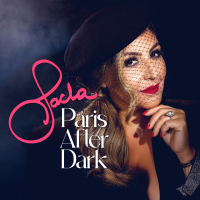Home » Jazz Musicians » King Pleasure
King Pleasure
Vocalese is a term given to a small niche style of jazz and blues music. It is created by giving a vocal chorus to the instrumental improvisation played by a jazz or blues master. The vocal chorus is in tempo and syntax, and fits greatly with the ideas of the originator of the solo. It is a very difficult and exacting task and very few can master this art. The first was probably Eddie Jefferson, but the most famous of its practitioners was a guy known by the flowery and imaginative name of King Pleasure.
The King came to be at the legendary amateur night at the Apollo Theater in New York City one night in late 1951. Up to that time he was known as Clarence Beeks, but that night on stage he presented his own unique take on the standard tune "I'm In The Mood For Love". Using lyrics originally written by Jefferson to the solo on the tune by James Moody, Beeks did his number and was declared the winner of the talent fest. King Pleasure was born that night in Harlem.
Clarence Beeks was born in Oakdale, Tennessee, in March of 1922. Not much is known about his early years, but by the late forties he was in New York City and was part of the passing parade during a period of tremendous musical exploration and discovery. Bebop had been king of the jazz clubs but by now the center of these exciting times, 52nd Street, was soon to be a part of history. The Famous Door, Three Deuces, Bop City, Streets of Paris, and Onyx Club, all departed the scene leaving Birdland standing alone. Beeks came across the Eddie Jefferson lyrical exploits and took to that style immediately giving "Moody's Mood" his own vocal signature which he presented to the amateur night crowd at the Apollo.
By the month of February in 1952 King Pleasure was signed to a recording contract with Prestige Records in New York. His first release for the label was the tune that served him so well, "I'm In The Mood For Love". Paying homage to the originator of the solo that the vocal was based on, the tune was renamed "Moody's Mood For Love" and released on Prestige. He was backed up by the combo of Teacho Wiltshire and vocalist Blossom Dearie on the session. The flip side of the record was the song "Exclamation Blues". The record immediately began to sell in New York and other East Coast cities. During the spring and summer the record sells big across the country and gets into the top ten R & B national charts.
Read moreTags
Another Story

by Matthew Michael Sweeney
Spencer said, “This is going to make you very angry, but you need to go the bathroom right now and smile into the mirror. Just remember I'm doing this because I love you very much. Don't talk to or look at anybody until you do that." They stood facing each other, Spencer and Diane, very close together, in the sprawling kitchen of her parent's ranch house overlooking the choppy rain and wind-swept waters of Lake Martin. Across the ...
Continue Reading


































